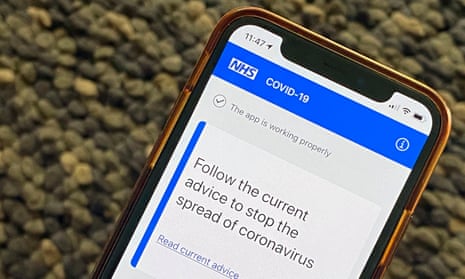The idea of the NHS tracing app is to enable smartphones to track users and tell them whether they interacted with someone who had Covid-19. Yet this will work only if large proportions of the population download the app. No matter how smart a solution may appear, mass consent is required. That will not be easy. Ministers and officials have failed to address the trade-offs between health and privacy by being ambiguous about the app’s safeguards.
Instead of offering cast-iron guarantees about the length of time for which data would be held; who can access it; and the level of anonymity afforded, we have had opacity and obfuscation. It is true that we are dealing with uncertainties. But without absolute clarity about privacy the public is unlikely to take up the app with the appropriate gusto.
The NHS and the health secretary Matt Hancock are now racing to fix these problems so that the app can be rolled out. Time is of the essence, as digital contact tracing will be required so that the lockdown can be eased. Mr Hancock’s problem has been exacerbated because the NHS app is incompatible with a new interfacing software, or API, being developed by Google and Apple.
The difference is a fundamental one. The NHS in England wants to pool the information it collects in a single database. The tech giants aim to decentralise the Covid-19 data across devices. The NHS app was designed when testing was rare in the UK and is built for self-diagnosis. Users tell the app if they are displaying symptoms and a centralised database records which phones are being sent alerts and roughly where they are. This is a protection against pranksters aiming to deceive the system. The Google/Apple API relies on public health systems and mass testing. Silicon Valley, it seems, wants only medically endorsed results as inputs – once you have good data there’s no need for the discipline of a panopticon.
Apple and Google could allow third-party developers like the NHS access to the Bluetooth signals smartphones have received in the last two weeks. The tech giants at present only permit developers to ask if a signal has been heard and respond yes or no. They do not allow them to scan a phone’s collected signals. Permitting the NHS to do this, the digital behemoths fear, would lead to similar demands from totalitarian regimes interested in the company people keep beyond their Covid-19 status. European nations have been infuriated by this reasoning.
In England, around 60% of the population needs to download the app to make it work. As Google and Apple account for nine out of 10 phones, it may be easier to piggyback on their software. Without their help, apps strain to work properly. NHS England was not wrong to chart its own course. But the venture has struggled because of a wider failure to build a “test, trace and isolate” system. Even with the level of testing England currently has, Google and Apple’s app would not be the answer now. Ministers have a few weeks to bridge the gap between an English system that might be rendered redundant in the near future and a Californian one which needs a public health system we do not yet have.
